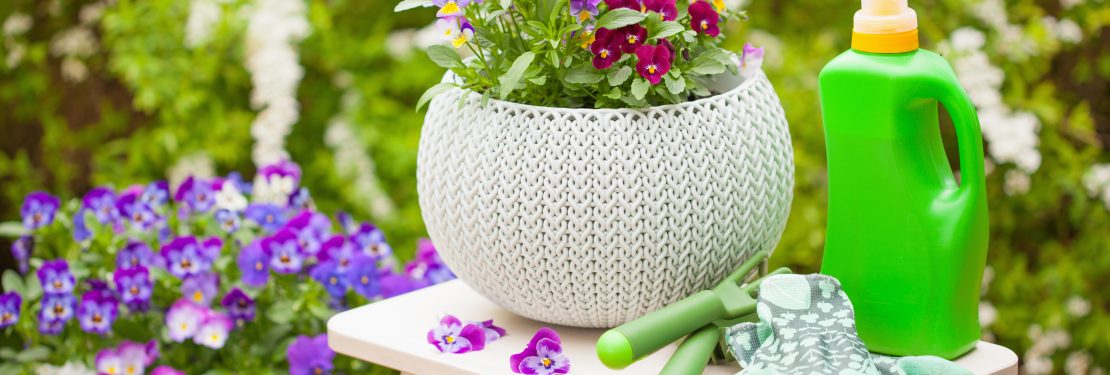January 10, 2020
Lawn Care and Flowers for Alabama Winters

There are some truly breathtaking parts of Alabama in the winter season. Our mountains, flowing rivers, and forests draw tourists from all around. For the average homeowner though, our lawns can be rather disheartening and our flower beds..meh. Brown grass, leafless trees, and solemn landscaping can leave us longing for spring. There are some things you can do to make sure your lawn is the best it can be when spring arrives. Adding a splash of color to your flower beds in the winter months helps to get through the cold. Read on below as we discuss lawn care and flowers for Alabama winters.
Winter Flowers
Brightly colored flowers in the midst of a dead winter can be a great encouragement and add some much-needed curb appeal. If you act now and plant tulip, daffodil, and other bulb plants you may still be able to get them to pop up in the next month or so. These bulbs are best planted in late November or December though. Many homeowners choose to plant winter annuals but they act more as perennials because they cannot survive our heat such as pansies, snapdragons, violets, dianthus, and winter honeysuckle. (Perennials mean they live just one season. Annual plants will come back year after year) For a quick change with big curb appeal, grab a few flats of pansies and snapdragons and fill a bed or container with them. They do like full sun but can tolerate some shade. Ornamental Kale (not to be eaten!) has bright pink or red centers that are very striking in wintertime. Take a walk down the flower aisle at your lawn and garden shop and choose some of your favorites. A small flat of pansies is less than $15 and contains 12 plants. For more longterm color, consider a winter-blooming camellia. They come in a variety of colors and smell divine. The Chinese Fringe flower is another favorite here in the south and produces a large pink flower. It can also double as a privacy border.
Lawn Fertilizers
Beware of all the brightly colored bags of fertilizer on the store shelf. They all say they are the perfect mix for you lawn. Contrast those bags with the fertilizer bags of a professional lawn company. They are usually one colored ink on the packaging with a simple name and rating system. You can find these at your local lawn and garden store and they are usually less expensive and tailored to really what you need, but then you wonder “What do I really need?”
If you look on the bag there is a three-number rating system called the N-P-K system. (15-10-10 for example) These numbers correspond to the elements Nitrogen – Phosphorous- Potassium. (Potassium on the periodic tables is labeled as K.) These are the basic nutrients that our lawns need. The numbers give the ratios of each element in the bag so in the 15-10-10 example, that bag would contain more nitrogen (15) and equal parts phosphorous (10) and Potassium (10). An easy way to reference it is the first number effects the top portion of the grass and the next effects the stems and then the last number affects the roots. Now that you have that down, let’s explain what ratio your lawn may need.
In Alabama, most homes have what is called “warm-season grass.” This includes the grass species Bermuda, St. Augustine, Centipede, Zoysia, Bahia, and Carpetgrass. They are often called southern grasses because they grow best in hot summer areas. They lack winter hardiness and turn brown in cold months. Nitrogen is key to creating green luscious grass. So when choosing a fertilizer for your established healthy grass, a fertilizer with the first number largest is usually a good bet. (Think Big number-small number-small number) Don’t disregard the phosphorous (stimulates root growth and new growth of grass) and potassium (helps settle and establish the roots). Since an established lawn should not really be flowering for new growth nor needing to establish new roots, the lower number of the P and K on the bag should suffice. So a bag of Big-small-small ratio would be great. New sod laid down is different and has mature grass on top but the roots have been severed so a ratio of Small-big-big would be better for it. A stressed-out lawn needs more potassium (the last number) but don’t zero out the others. Potassium-rich fertilizers tend to be more expensive but it is worth it in the long run!
Weed Control
We talked above about the warm season grasses and how they brown in the winter. If you are seeing spots of green in your otherwise brown yard then those my friend, are weeds, not grass. There are a variety of winter weeds that pop up but the good news is they can be easily addressed. Find an herbicide specifically designed for winter weeds. While an all-purpose weed killer may take care of what you see on top but the roots may survive. These types of weeds (nutsedge in particular) spread underground. The battle is won with an all-purpose weed killer but the war is not over until you apply one that specifically attacks the root system. Winter weeds can multiply quickly and take over your beautiful grass leaving unsightly brown and bare spots come spring.
We hope you enjoyed these tips on lawn care and flowers for Alabama Winters. The team at Method takes pride in our work helping you purchase your own home and love sharing tips to make it the best it can be!














